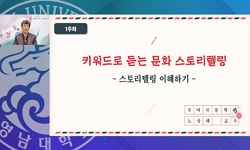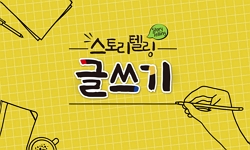In 2012, the musical film, Les Miserables directed by Tom Hooper was a huge success in Korea. The musical film’s huge success was very unusual. The objective of this study is to show storytelling characteristics of the musical film, Les Miserables. ...
http://chineseinput.net/에서 pinyin(병음)방식으로 중국어를 변환할 수 있습니다.
변환된 중국어를 복사하여 사용하시면 됩니다.
- 中文 을 입력하시려면 zhongwen을 입력하시고 space를누르시면됩니다.
- 北京 을 입력하시려면 beijing을 입력하시고 space를 누르시면 됩니다.
https://www.riss.kr/link?id=A104216388
-
저자
이상민 (가톨릭대학교)
- 발행기관
- 학술지명
- 권호사항
-
발행연도
2013
-
작성언어
Korean
-
주제어
Les Miserables ; Storytelling ; Musical Movie ; Tom Hooper ; Bille August ; Desire triangle ; <레 미제라블> ; 스토리텔링 ; 뮤지컬 영화 ; 톰 후퍼 ; 빌 어거스트 ; 욕망의 삼각형
-
등재정보
KCI등재
-
자료형태
학술저널
-
수록면
559-583(25쪽)
-
KCI 피인용횟수
1
- 제공처
-
0
상세조회 -
0
다운로드
부가정보
다국어 초록 (Multilingual Abstract)
This study compares narrative characteristics of Tom Hooper’s Les Miserables with Bill Auguste’s Les Miserables released in 1998. Les Miserables in 1998 and in 2012 deploy different characteristics in narrative. The plot of Les Miserables in 1998 mainly concerns the conflict between central characters, Jean Valjean and Javert. In the second half of the film, confrontation of opposite figures of Jean Valjean and Javert was changed into conflict of each characters’ awareness of world. That is the conflict between the Javert’s feudal perspective and Jean Valjean’s civil perspective about society. While the central plot of Les Miserables in 2012 is the Jean Valjean’s internal conflict to find his identity as represented with shouting ‘Who am I’. The characters in the film including Jean Valjean are able to be reborn as an independent subject through desire triangle. Here, the musical film Les Miserables maximizes the process in which, through melodious narrative, the characters become matured citizens. Les Miserables in year 2012 asks audience “Who am I”. And through “One day more” the film makes the audience expect what world would become. In addition, “Do You hear the people sing?” also makes the audience think about what subject we would become. The storytelling in Les Miserables in 2012 gives the audience catharsis with forming strong consensus among other audience.
In 2012, the musical film, Les Miserables directed by Tom Hooper was a huge success in Korea. The musical film’s huge success was very unusual. The objective of this study is to show storytelling characteristics of the musical film, Les Miserables.
This study compares narrative characteristics of Tom Hooper’s Les Miserables with Bill Auguste’s Les Miserables released in 1998. Les Miserables in 1998 and in 2012 deploy different characteristics in narrative. The plot of Les Miserables in 1998 mainly concerns the conflict between central characters, Jean Valjean and Javert. In the second half of the film, confrontation of opposite figures of Jean Valjean and Javert was changed into conflict of each characters’ awareness of world. That is the conflict between the Javert’s feudal perspective and Jean Valjean’s civil perspective about society. While the central plot of Les Miserables in 2012 is the Jean Valjean’s internal conflict to find his identity as represented with shouting ‘Who am I’. The characters in the film including Jean Valjean are able to be reborn as an independent subject through desire triangle. Here, the musical film Les Miserables maximizes the process in which, through melodious narrative, the characters become matured citizens. Les Miserables in year 2012 asks audience “Who am I”. And through “One day more” the film makes the audience expect what world would become. In addition, “Do You hear the people sing?” also makes the audience think about what subject we would become. The storytelling in Les Miserables in 2012 gives the audience catharsis with forming strong consensus among other audience.
참고문헌 (Reference)
1 김민영, "현대 뮤지컬 음악과 영화 음악에 나타난 음화법 사용에 대한 고찰" 상명대학교 대학원 2008
2 고지혜, "해방 이후 아동문학 장(場)에서의 『레미제라블』 수용 양상 연구" 한국아동청소년문학학회 (11) : 259-294, 2012
3 이노신, "찰스 디킨즈의 『올리버 트위스트』와 빅토르 위고의 『레 미제라블』의 상호텍스트성 분석" 한국영미문화학회 10 (10): 199-220, 2010
4 아니카 르메르, "자크 라캉" 문예출판사 1998
5 권택영, "욕망 이론" 문예출판사 1999
6 권택영, "영화와 소설 속의 욕망 이론" 민음사 1995
7 로버트 맥기, "시나리오 어떻게 쓸 것인가" 황금가지 2005
8 김현주, "소설 「레 미제라블(Les Misérables)」에 나타난 의상 연구" 한국패션디자인학회 11 (11): 1-21, 2011
9 박진영, "소설 번안의 다중성과 역사성-[레미제라블]을 위한 다섯 개의 열쇠" 민족문학사학회 (33) : 214-255, 2007
10 김영철, "소설 <레 미제라블>을 읽고 나서: 한 교육학적 독후감" 5 : 31-54, 2002
1 김민영, "현대 뮤지컬 음악과 영화 음악에 나타난 음화법 사용에 대한 고찰" 상명대학교 대학원 2008
2 고지혜, "해방 이후 아동문학 장(場)에서의 『레미제라블』 수용 양상 연구" 한국아동청소년문학학회 (11) : 259-294, 2012
3 이노신, "찰스 디킨즈의 『올리버 트위스트』와 빅토르 위고의 『레 미제라블』의 상호텍스트성 분석" 한국영미문화학회 10 (10): 199-220, 2010
4 아니카 르메르, "자크 라캉" 문예출판사 1998
5 권택영, "욕망 이론" 문예출판사 1999
6 권택영, "영화와 소설 속의 욕망 이론" 민음사 1995
7 로버트 맥기, "시나리오 어떻게 쓸 것인가" 황금가지 2005
8 김현주, "소설 「레 미제라블(Les Misérables)」에 나타난 의상 연구" 한국패션디자인학회 11 (11): 1-21, 2011
9 박진영, "소설 번안의 다중성과 역사성-[레미제라블]을 위한 다섯 개의 열쇠" 민족문학사학회 (33) : 214-255, 2007
10 김영철, "소설 <레 미제라블>을 읽고 나서: 한 교육학적 독후감" 5 : 31-54, 2002
11 차영선, "빅토르 위고 작품의 스토리텔링과 OSMU - 레미제라블을 중심으로 -" 한국프랑스학회 72 : 619-638, 2010
12 이은주, "뮤지컬을 통한 음악 지도 방안 연구 : 오페라의 유령과 레미제라블을 중심으로" 경희대학교 교육대학원 2010
13 김지영, "뮤지컬에서 나타나는 확대된 노래형식에 관한 연구 : 뮤지컬 「레 미제라블」의
14 강수현, "뮤지컬 「레미제라블」 분석을 통한 음악의 극적기능에 관한 연구" 이화여자대학교 실용음악대학원 2010
15 김현, "르네 지라르 혹은 폭력의 구조" 나남 1987
16 김경규, "레미제라블에 나타난 빅토르 위고의 소설기법" 한국외국어대학교 대학원 1989
17 "레미제라블"
18 "레미제라블"
19 김광선, "『레 미제라블』의 음악적 텍스트 연구" 8 : 117-140, 2002
20 전금주, "“파리의 떠돌이 아이들”에 관한 소고: 레 미제라블의 가브로슈를 중심으로" 23 : 35-73, 2009
21 "www.maxmovie.com"
22 "www.kobis.or.kr"
23 "www.imdb.com"
24 "www.cgv.co.kr"
25 "www.boxofficemojo.com"
26 김희경, "Victor Hugo의 견자적(見者的) 소설(le roman visionnaire) : 『레 미제라블Les Mis?rables』" 한국불어불문학회 (54) : 163-194, 2003
27 노영해, "19세기 오페라와 현대의 대중적 뮤지컬 사이의 연속성" 3 : 110-140, 2000
동일학술지(권/호) 다른 논문
-
죄 없는 K는 악몽의 미로를 어떻게 빠져나올 수 있을 것인가: 오손 웰즈의 영화 <심판>과 카프카의 소설 『심판』의 비교분석
- 문학과영상학회
- 최진성
- 2013
- KCI등재
-
파괴 의지로서의 죽음 본능 탐색—<실비아>와 『종 항아리』의 실비아 플라스와 에스더 그린우드의 사례를 중심으로
- 문학과영상학회
- 임정명
- 2013
- KCI등재
-
- 문학과영상학회
- 이호걸
- 2013
- KCI등재
-
표현기술의 변화로 인한 문학가치의 변형—톰 후퍼 <레 미제라블> 전후를 중심으로—
- 문학과영상학회
- 강익모
- 2013
- KCI등재
분석정보
인용정보 인용지수 설명보기
학술지 이력
| 연월일 | 이력구분 | 이력상세 | 등재구분 |
|---|---|---|---|
| 2026 | 평가예정 | 재인증평가 신청대상 (재인증) | |
| 2020-01-01 | 평가 | 등재학술지 유지 (재인증) |  |
| 2019-08-06 | 학회명변경 | 영문명 : Korean Association Of Literature And Film -> The Korean Association Of Literature and Film |  |
| 2017-01-01 | 평가 | 등재학술지 유지 (계속평가) |  |
| 2013-01-01 | 평가 | 등재학술지 유지 (등재유지) |  |
| 2010-01-01 | 평가 | 등재학술지 유지 (등재유지) |  |
| 2008-01-01 | 평가 | 등재학술지 유지 (등재유지) |  |
| 2005-01-01 | 평가 | 등재학술지 선정 (등재후보2차) |  |
| 2004-01-01 | 평가 | 등재후보 1차 PASS (등재후보1차) |  |
| 2003-01-01 | 평가 | 등재후보학술지 선정 (신규평가) |  |
학술지 인용정보
| 기준연도 | WOS-KCI 통합IF(2년) | KCIF(2년) | KCIF(3년) |
|---|---|---|---|
| 2016 | 0.17 | 0.17 | 0.2 |
| KCIF(4년) | KCIF(5년) | 중심성지수(3년) | 즉시성지수 |
| 0.23 | 0.26 | 0.491 | 0.04 |




 KISS
KISS






